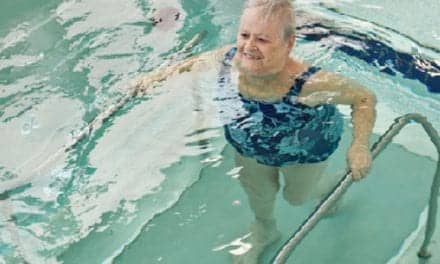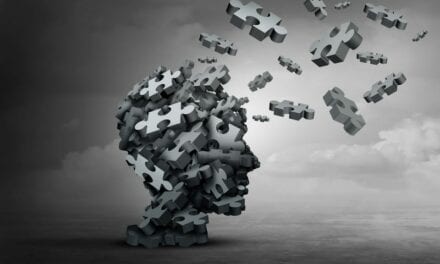
Around the world millions are affected by chronic pain every year. Pain exacts a tremendous burden in the United States in health care costs, rehabilitation, and lost worker productivity. A National Centers for Health Statistics survey indicates low back pain is the most common chronic pain condition (27%), followed by severe headache or migraine pain (15%), neck pain (15%), and facial ache or pain (4%).1
Regardless of the diagnosis, clinicians face challenges common to all chronic pain patients. The following vignettes can help both the clinician and patient manage the course of rehabilitation for orthopedic and neurological patients with chronic pain.
THE GAME OF STRAWS
Let’s think about “the straw that broke the camel’s back.” Various aspects of patients’ lives act as potential sources of “straws”: emotional stress, social and socioeconomic situations, medical conditions, and daily physical or mechanical stressors. As straws accumulate, the patient’s mind and body’s ability to physiologically adapt decreases and system sensitivity becomes heightened. Finally, one straw pushes the patient’s condition “over the edge.” At that point, control is lost and it can be difficult for the patient to escape a cycle of pain. In developing self-care strategies and management skills for chronic pain, the therapist should assess areas of the patient’s life in which they can begin taking away straws. As this happens, patients’ bodies and minds will develop more adaptability, and the patient becomes better able to tolerate physical and mental demands without “flaring up.”
THE GAS TANK
The analogy of a gas tank can help patients assess and manage their daily energy level. The gas tank influences pain, energy level, and overall well-being. Teach patients to make a daily assessment of their gas tank throughout the day. The best time to begin the first assessment is upon waking. Someone with chronic pain typically begins the day with their gas tank on ¼ full or empty. As rehabilitation and medical management progress, their gas tank will gradually begin to fill up. Soon, they will find themselves waking up half full and going to sleep with some gas left in the tank. Helping them to sensibly manage their gas tank is one of the keys to building up a steady reserve and expanding their body’s physiological adaptive range for physical activity and mental demands. No matter how much gas they have to begin the day, patients should never go to bed on empty. When patients gradually build their end of day reserve, they will be able to begin the next day with more energy.
THE ROLLER COASTER RIDE
Patients’ aches, pains, and fatigue may vary in intensity, frequency, and location from day to day, often for no apparent reason. If they are having a mini-flare-up, have them review the past 24 hours to 36 hours to assess if their physical activity or stressors could have set them off. When treatment is initiated (medication and/or physical therapy), patients may experience a decrease in fatigue, pain, and soreness. It is ideal if this trend continues steadily, but this is usually not the case. The road to healing is filled with peaks and valleys. When patients are having what appears to be a “breakthrough,” teach them to try to keep an even keel emotionally and physically. It is important they do not try to fill their day with extra activity just because they are having a good day. This flurry of increased activity left unchecked may cause a significant flare-up tomorrow.
THE WHITE TORNADO SYNDROME
Sooner or later patients must admit that they have limitations. It is better to work within those limitations and make adjustments that allow an individual to continue to enjoy life rather than push themselves into pain. An example of these adjustments is seen in the case of a woman who describes herself as a type A personality, and “white tornado” performing housework. The woman typically would clean her seven-room house once a week. As her pain picture emerged and worsened, cleaning the house in a single day caused her to spend the following 3 days to 4 days in bed with a major flare-up of pain. A simple management tool in this case was to ask her to clean just one room per day. At the end of 1 week, her house was still getting the weekly cleaning and she ended each week without a significant flare-up. The easy part was laying out this plan for the patient. The difficult part was getting the patient to accept her limitations. By making modifications based on the white tornado vignette, clinicians can help patients modify their activities of daily living to minimize self-inflicted flare-ups.
POSTURED FOR RELIEF
Patients may often arrive home from work and collapse in a favorite chair to watch television, listen to music, or read a book. But what is happening to their physical bodies as they mentally relax? Are they slumped in the low back with their head hanging forward like a goose neck? Are patients truly postured for relief? Patients must be taught to assess their parameters of physical and mental relaxation when taking “time out.” Why take away mental stress while adding mechanical stress? Help patients incorporate the principles of good body mechanics the next time they sit down to relax. Chances are they will not only feel better while performing the activity, but will not feel as stiff and sore getting up. Do not forget about controlling mechanical stressors while sleeping. Simple pillow positioning can mean the difference between a good or bad night’s sleep.
TO GET UP OR NOT TO GET UP…THAT IS THE QUESTION
Chronic pain patients need to establish a regular waking routine. Upon rising in the morning, they should not gauge the entire day based on how they feel the moment they open their eyes. Chances are they will be stiff and sore. As treatment progresses, hopefully, they will begin to feel refreshed and restored after a good night’s sleep. Having patients perform some gentle stretches before getting out of bed, then taking a warm shower or bath, can help them begin the morning in a positive way. The energy levels of chronic pain patients may fluctuate during the day. They should try to leave the most strenuous activities for the “time window” in which they typically have the most energy.
IONTOPHORESIS: ALLY IN THE BATTLE AGAINST CHRONIC PAIN
While often used to treat acute pain, iontophoresis can also be an effective tool for subacute chronic pain management, positioning it as an option in the overall treatment of chronic pain. These symptoms include the chronic subacute inflammation associated with chronic low back pain and myofascial pain syndrome.
“In our sports therapy clinic, one of the tools we rely on for both acute and chronic soft tissue injuries is iontophoresis,” says Neil Chasan, PT, MMT, owner of Sports Reaction Center, in Bellevue, Wash. Chasan describes the modality as a trusted part of his clinic’s pain management protocol. Iontophoresis provides a high, local concentration of medication to the origin of pain and can be used with a variety of patients, offering multiple advantages including reduced risk of infection or skin damage, elimination of discomfort often associated with injections, and reduced risk of systemic side effects. The modality provides this localized concentration by using electrodes, patch electrodes, and low voltage galvanic (dc) stimulation.
Chasan explains that his facility uses iontophoresis to administer prescribed dexamethasone sodium phosphate, injectable equivalent to 4-gram/milliliter to treat a range of chronic conditions. He notes that a blend of iontophoresis’ localized concentration, and the potent synthetic dexamethasone sodium phosphate, can translate into an effective treatment of chronic tendinitis issues, including lateral epicondylitis, patella tendonitis, rotator cuff impingement syndrome, and biceps tendinitis.
“We also use iontophoresis with various chronic myofascial injuries because of the anti-inflammatory properties of the active agent,” Chasan says. “We combine iontophoresis with various myofascial techniques such as graston or ASTYM, routine manual therapy, and strengthening strategies.”
—Brittan West
ACCEPTANCE VS DEFEAT
Acceptance does not mean giving up. Clinicians must help patients accept responsibility for their own well-being and make a commitment toward positive lifestyle change. Encourage patients to accept how they feel in the moment—even if they do not like how they feel at that moment—with an eye toward improving for the future. Patients must have the willingness to change and accept they may never get back to their “old selves.” It needs to be emphasized that they can either modify and continue to enjoy life, or they can choose to run themselves into the ground and be miserable. After a struggle, most patients will realize modification is a practical approach that can help them move forward to realize their maximal potential. It should be noted maximum potential is the maximal physical level of which a patient is capable, given the progression of their condition and circumstances surrounding their life.
DON’T FORGET THE TOOL BAG
Therapeutic modalities should be included in the tool bag. Modalities should be applied based on what underlying physiological principle the therapist is trying to achieve on the target tissue. Although the use of heat and cold may be downplayed, these modalities used strategically at home or in the clinic may allow a chronic pain patient to progress through the rigors of a general conditioning program. Likewise, the prudent use of various types of electrical stimulation, TENS, and ultrasound may ease pain during the day or in the evening to help achieve a better quality of sleep. The use of physiological taping techniques of muscles and joints may be useful in modulating pain and enhancing proprioceptive awareness.
The effects of low level laser fulfill many of the desired physiological effects we are looking for in patients with chronic pain. Most patients have tight connective tissue with either superimposed chronic or subacute inflammation. Tight muscles with trigger points have focal areas of tissue that are in energy crisis. The physiological benefits of low level laser include decreased pain, inflammation resolution, increased ATP production, tissue repair, and nerve regeneration.2 Low level laser also has been found to be effective in the treatment of acute and chronic neck pain.3
Every chronic pain patient needs to be assessed for general flexibility, strength, and fitness. A safe starting point is to address large muscle group stretches such as the hamstrings, calf, buttocks, hip adductors, and hip flexors in the lower extremities. The upper quarter should include the trapezius, rhomboids, shoulder rotators, pectorals, and forearm flexors and extensors. Prescribed spinal exercises need to be tailored to the individual based on centralization analysis and symptom reduction. Strengthening exercises should address any isolated weakness. More importantly, a well-rounded general strengthening and conditioning program prescribed with an incremental approach will be tolerated by most chronic pain patients.
Daniel Danish, PT, MHS, MTC, is site manager for CORE Physical Therapy/Good Shepherd Rehabilitation Hospital, in Bethlehem, Pa. He specializes in the treatment of chronic pain, including myofascial pain and fibromyalgia. For more information, contact .
References
- National Centers for Health Statistics. Chartbook on Trends in the Health of Americans 2006, Special Feature: Pain.
- Hode L, Tuner J. Laser Therapy Clinical Practice and Scientific Background. Grangesberg, Sweden: Prima Books AB; 2002.
- Chow RT, Johnson M, Lopes-Martin RAB, Bjordal JM. Efficacy of low-level laser therapy in the management of neck pain: a systematic review and meta-analysis of randomised placebo or active-treatment controlled trials. Lancet. 2009;374(9705):1897-908.





